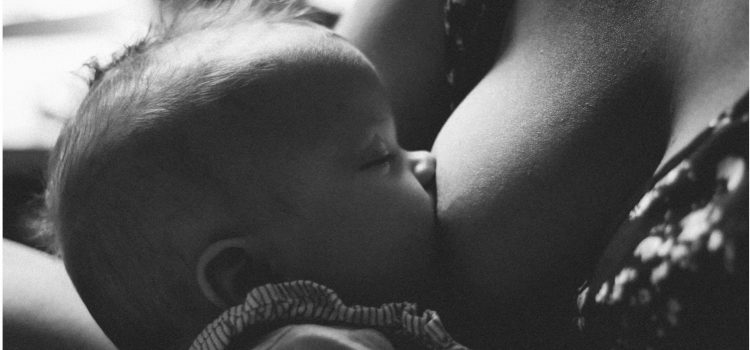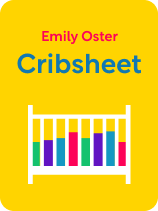

This article is an excerpt from the Shortform book guide to "Cribsheet" by Emily Oster. Shortform has the world's best summaries and analyses of books you should be reading.
Like this article? Sign up for a free trial here.
What are the most common breastfeeding myths? How does breastfeeding impact your and your baby’s health?
According to Emily Oster, people tend to have strong opinions about which parenting choices make you a good parent, but Oster wants to empower parents to make their own, informed decisions based on data. In her book Cribsheet, she debunks common breastfeeding myths based on her meticulous research.
Keep reading to learn the top five breastfeeding myths Oster examined in her book.
Answering the Top Five Myths
People sometimes claim that breastmilk is a near-miraculous substance that will raise your baby’s IQ and boost their health. Cribsheet author Emily Oster argues that while there’s a correlation between some of these benefits and breastfeeding, there’s only evidence of causation for some of these benefits. This is just one of the breastfeeding myths that Oster examined in her book.
Below, we’ll take a more in-depth look at the five myths about breastfeeding, according to Oster.
#1: Breastfeeding & Your Baby’s Health
According to research, breastfeeding slightly lowers your baby’s risk of several minor health issues, including rashes, eczema, gastrointestinal issues, and ear infections. However, to debunk the common breastfeeding myth that breastmilk makes babies smarter, there’s no evidence that breastfeeding raises your baby’s IQ. The research also doesn’t show that breastfeeding reduces their risk of obesity, high blood pressure, respiratory infections, cavities, or SIDS.
#2: Breastfeeding & Parents’ Emotional Health
Oster cites evidence that breastfeeding can positively or negatively impact your emotional health. Some parents who nurse feel happy, connected to their babies, and powerful. By contrast, some parents who nurse experience frustration, shame, and guilt when they’re unable to breastfeed or they choose not to breastfeed.
| Social Stigmas Around Breastfeeding Research shows that nursing parents face both pressure to breastfeed (often due to its positive effects, as outlined above) and a social stigma against breastfeeding. These conflicting messages may make the decision to breastfeed or not an emotionally fraught experience in itself. Let’s further explore these conflicting messages and consider possible solutions. On the one hand, parents often feel social pressure to breastfeed, given its many reported health benefits for babies. Therefore, as Oster notes, parents who are unable to breastfeed, or choose not to for other reasons, sometimes feel ashamed. On the other hand, new parents may feel social pressure to not breastfeed: There’s a bias that breastfeeding mothers are less competent in the workplace, and the social stigma against nursing in public discourages some parents from breastfeeding. To address these social stigmas and breastfeeding myths, one expert claims that public health campaigns that focus on the benefits of breastfeeding should instead focus on promoting social policies that reduce stigma around decisions to breastfeed or not. Specifically, she claims that public health efforts should normalize how challenging it is to breastfeed and advocate for workplace policies that make it easier to breastfeed (such as having a private lactation space). |
#3: Breastfeeding & Parents’ Physical Health
According to Oster’s research into breastfeeding myths, it’s true that breastfeeding can positively impact a nursing parent’s physical health. First, there’s strong evidence that breastfeeding significantly reduces your chance of getting breast cancer. Breastfeeding lowers your estrogen (which reduces your cancer risk) and modifies your breast cells (making them less vulnerable to carcinogens).
(Shortform note: If you choose not to breastfeed or you’re unable to, you may worry about missing out on this benefit. Fortunately, there are other ways to reduce your chances of developing breast cancer. The following behaviors are associated with lower risks of breast cancer: staying physically active, maintaining a healthy weight, and limiting alcohol consumption.)
Oster also cites evidence that breastfeeding can cause physical pain. Some people who nurse experience sore breasts and bleeding nipples. You can relieve breast pain by applying any of the following to your chest: cold packs, hot packs, and cold cabbage leaves (which soothe pain and conform to the shape of your breasts). Frenulum surgery can reduce nipple pain. This surgery cuts the baby’s frenulum (where their tongue connects to the floor of their mouth), making it easier for them to latch onto your nipples. If these or other remedies fail to reduce your pain, call your doctor to be evaluated for mastitis (a treatable infection).
(Shortform note: Many of the resources Oster recommends are accessible to most parents: Cold packs, hot packs, and cold cabbage leaves are inexpensive and easy to find. However, some of her recommendations may be prohibitively expensive for some families. Frenulum surgery (which can cost upwards of $350) and mastitis treatment (which can cost over $2,000) may not be covered by a family’s health insurance. Experts are seeking to address some of these gaps in access by offering programs that provide free nursing support.)
#4: Alcohol Consumption
It’s common for people to claim that nursing parents should avoid drinking alcohol. According to Oster, research reveals that this could be a breastfeeding myth—you don’t need to avoid alcohol entirely. Although your blood alcohol level determines your milk alcohol level, babies are only harmed when you consume more than four drinks prior to breastfeeding. If you want to err on the side of caution by ensuring no alcohol enters your milk, wait two hours per drink before pumping or breastfeeding.
(Shortform note: There’s a possible downside to nursing parents consuming even small amounts of alcohol that Oster doesn’t mention: Doing so disrupts infants’ sleep. One study conducted a trial that observed how well infants slept after consuming alcohol-free breastmilk and compared it to how well they slept after consuming breastmilk with low traces of alcohol. The researchers found that infants who consumed alcohol-containing breastmilk slept less deeply.)
#5: Introducing Solid Food
When it’s time to wean your child off breastfeeding and transition them to solid food, but there are many myths and controversies surrounding this topic. Two of the most important are 1) pickiness and 2) exposure to peanuts, a top allergen.
Pickiness: According to Oster, research reveals that it’s possible to make your child a less picky eater. If your child doesn’t like a flavor, don’t pressure them to try it or offer them another option. Kids are more likely to refuse food when families engage in these practices. Instead, present your child with a diversity of flavors early on and reintroduce those flavors multiple times. Children tend to like a flavor more once they’ve tasted it on multiple occasions.
(Shortform note: Understanding why your child may be a picky eater in the first place could help you empathize with their fussiness and show patience as you encourage them to try new foods. Some children are picky eaters because they’re “super tasters” who taste bitterness more intensely than other children. Other children are picky eaters because of genetics: They inherit preferences for certain foods over others. These findings show that food pickiness may be rooted in biological factors beyond the child’s control.)
Peanut exposure: People typically claim that you should refrain from exposing your baby to peanuts. Contrary to this, Oster argues that this advice makes children more allergic to allergens rather than less allergic because early peanut exposure reduces children’s risk of becoming allergic.
(Shortform note: How can you safely expose your baby to peanuts? Experts advise that you carve out time to carefully observe how your child reacts to small amounts of peanuts. First, mix two teaspoons of peanut butter or peanut flour into several tablespoons of a food your child already likes (such as yogurt). If they experience a reaction (such as trouble breathing, vomiting, itching, a rash, or a swollen face), take them to an emergency room. If they don’t experience a reaction, you can continue to feed them the rest of the mixture. Continue observing them closely for the next two hours to notice any signs of a reaction. Following this, start your child on a diet in which they eat two grams of peanuts three times a week for at least three years.)

———End of Preview———
Like what you just read? Read the rest of the world's best book summary and analysis of Emily Oster's "Cribsheet" at Shortform.
Here's what you'll find in our full Cribsheet summary:
- Why there isn't one right way to parent a young child
- How to make research-based parenting decisions
- When you should start potty training your toddler






